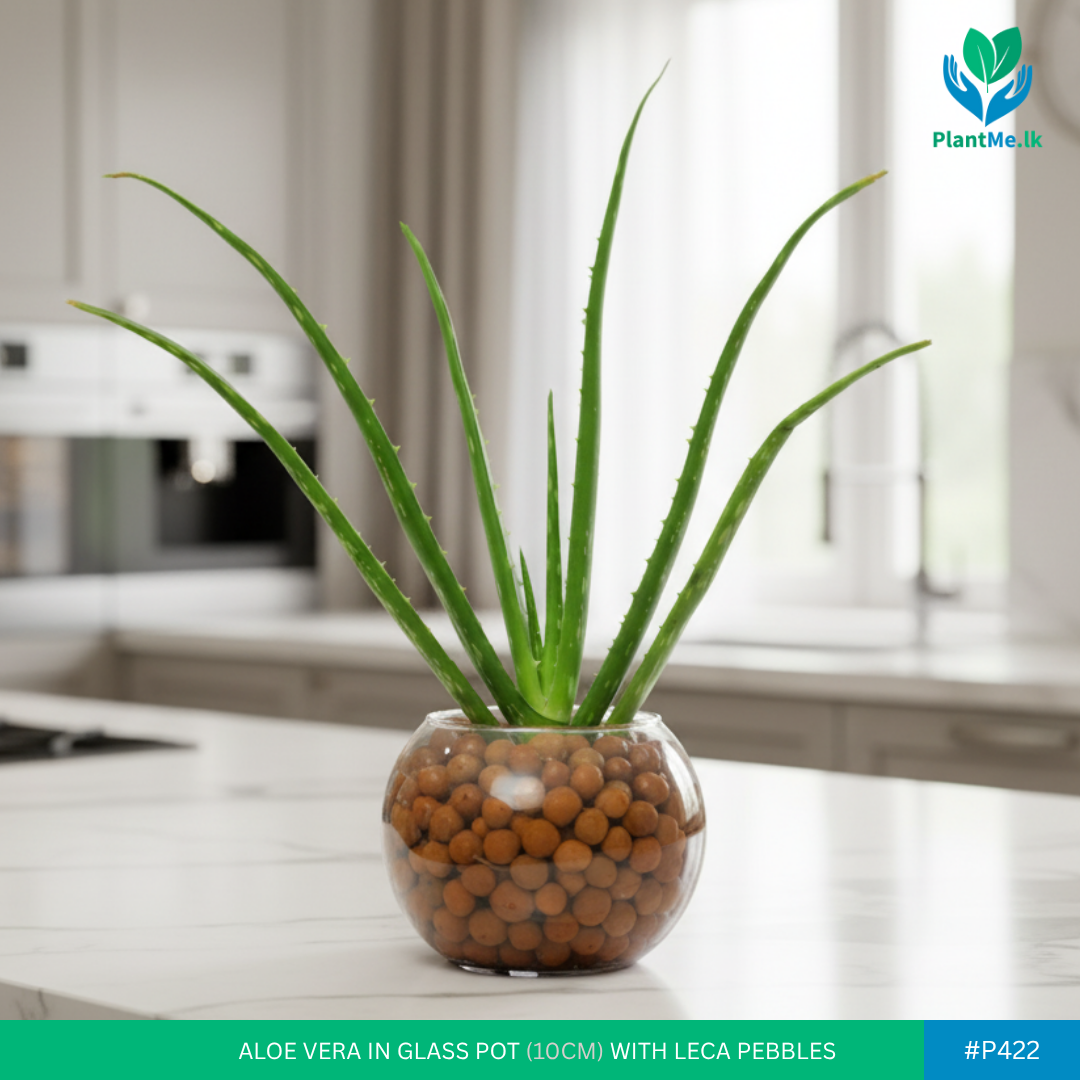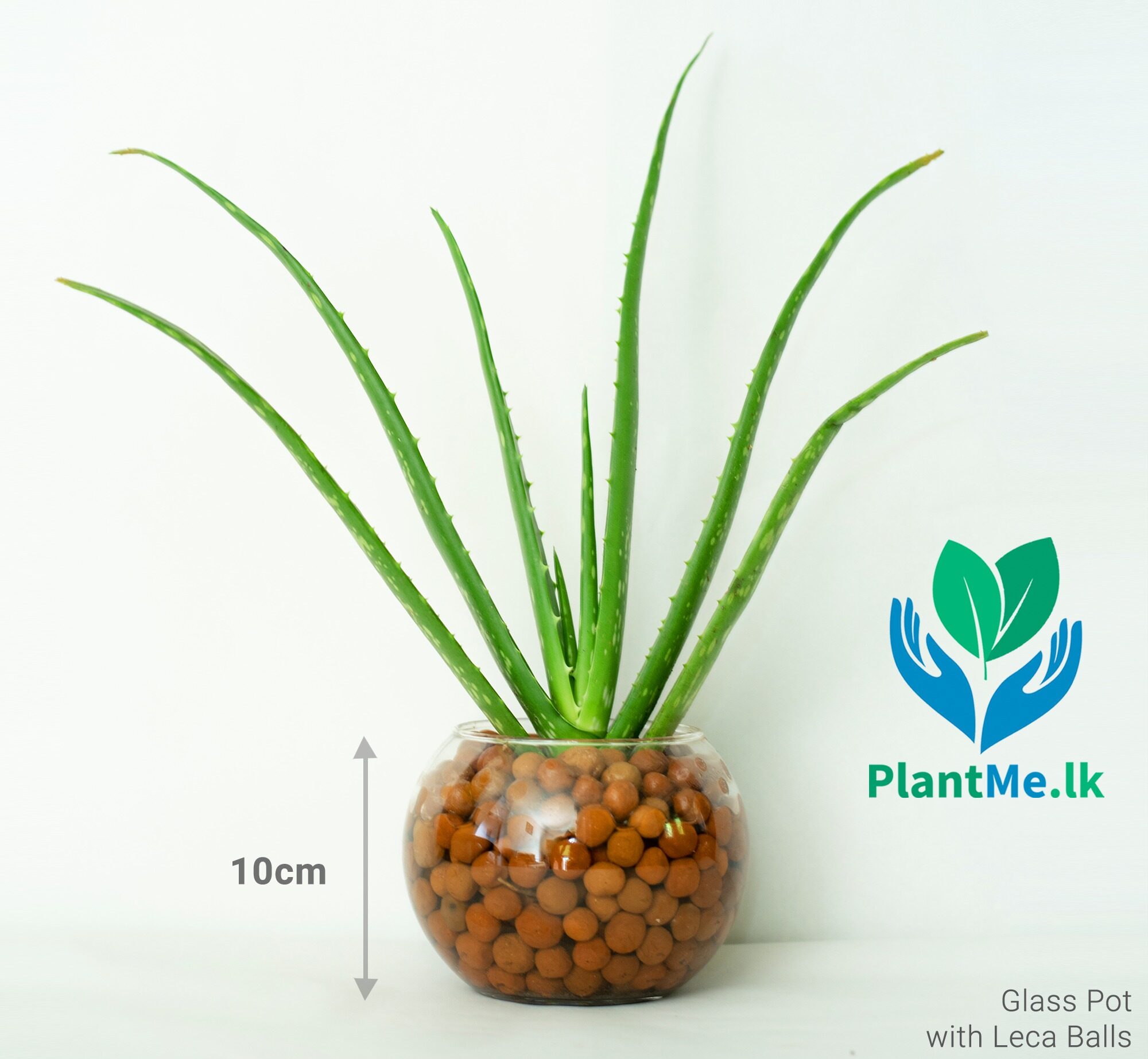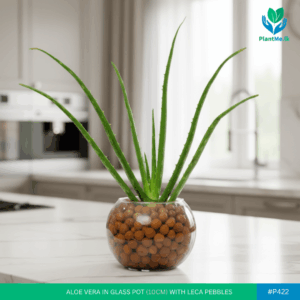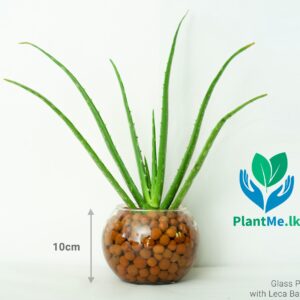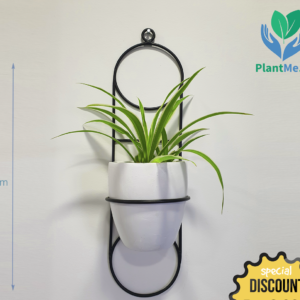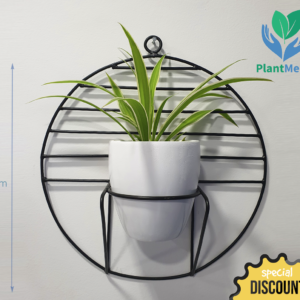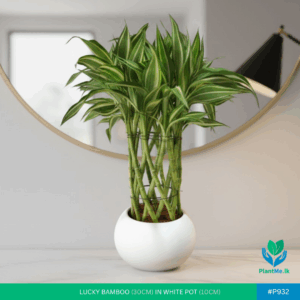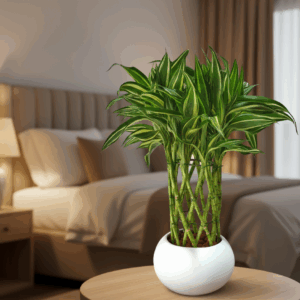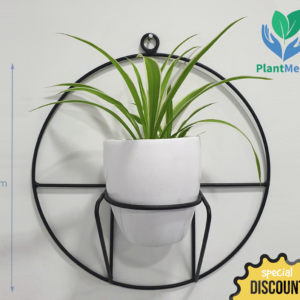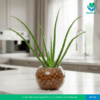-
×
 1 × Rs. 7,500.00
1 × Rs. 7,500.00 -
×
 Wall Hanging Plant with Black Pot | PR-313
2 × Rs. 7,500.00
Wall Hanging Plant with Black Pot | PR-313
2 × Rs. 7,500.00 -
×
 Premium Tall Indoor Plant with Black Pot - #502
2 × Rs. 6,600.00
Premium Tall Indoor Plant with Black Pot - #502
2 × Rs. 6,600.00 -
×
 Wall Hanging Plant with Black Pot | PR-311
2 × Rs. 7,500.00
Wall Hanging Plant with Black Pot | PR-311
2 × Rs. 7,500.00 -
×
 Wall Hanging Orchid Plant | PR-322C
2 × Rs. 9,500.00
Wall Hanging Orchid Plant | PR-322C
2 × Rs. 9,500.00
Aloe Vera in Glass Pot with LECA Balls | #P-422
Rs. 2,800.00 Original price was: Rs. 2,800.00.Rs. 2,400.00Current price is: Rs. 2,400.00.
𝗣𝗿𝗲𝗺𝗶𝘂𝗺 𝗜𝗻𝗱𝗼𝗼𝗿 𝗣𝗹𝗮𝗻𝘁𝘀 for Your Home & Office!🌵☘️
Aloe Vera (Snake Plant) in Glass Pot with LECA Balls
Glass Pot Diameter : 10cm
⭐️The LECA materials allow it to absorb water directly to the roots without suffocating them
⭐️ Modern indoor plants
⭐️ Attractive geometric designs
⭐️ Unique deco that fits anywhere
⭐️ Versatile options for table, wall & floor
📝Sizes and Colors of plants might be different than these pictures as all of these are growing natural plants
Categories: House Plants, Indoor Plants, Modern, Plants in LECA Balls, Potted Plants, Table Plants
Aloe Vera in Glass Pot with LECA Pebbles — The Minimal, Mess-Free Indoor Classic by PlantMe
PlantMe’s Aloe Vera in Glass pairs a timeless, hardy succulent with a modern transparent pot and LECA (Lightweight Expanded Clay Aggregate). The result is a clean, airy look that showcases natural textures while delivering a low-maintenance setup perfectly suited to busy homes, stylish offices, cafés, and reception counters.
Why Choose Aloe Vera in a Glass Pot?
Aloe Vera is a drought-tolerant succulent celebrated for its sculptural leaves and rugged resilience. In a clear glass vessel, you can actually see the root zone and moisture levels in the LECA layer, helping you avoid overwatering (the #1 cause of succulent problems). It’s elegant, educational, and practical—especially for beginners.
The LECA Advantage
- Excellent aeration: Rounded clay balls create air pockets that keep roots oxygenated.
- Even moisture buffering: LECA absorbs water and releases it slowly, reducing extremes.
- Reduced risk of root rot: No soggy soil; water drains to the bottom layer, away from roots.
- Cleaner than soil: Dust-free handling, minimal mess, and easy rinsing.
- Reusable medium: Boil or rinse and reuse LECA when refreshing your setup.
What You Get with PlantMe
- Healthy Aloe Vera acclimatized to indoor conditions.
- Crystal-clear glass pot that complements modern and classic interiors.
- Premium LECA pebbles, cleaned and prepped for best capillary action.
- Care card with quick tips for watering, light, and seasonal care.
Quick Specs
- Approx. Height: 15–25 cm (varies with batch)
- Light: Bright, indirect light (morning sun preferred)
- Watering: Infrequent—see schedule below
- Medium: LECA (semi-hydroponic style)
- Pot: Transparent glass (no drain hole; managed with reservoir method)
How to Care for Aloe Vera in LECA (Step-by-Step)
1) Light Requirements
Place your Aloe where it receives bright, indirect light. A gentle dose of morning sun is great; harsh midday sun through glass can scorch leaves. If growth looks pale or stretched, increase light gradually.
2) Watering Schedule (No Guesswork)
- Check the LECA: Let the top 80–100% of LECA become dry to the touch.
- Add water to the reservoir: Pour water slowly until the bottom 1–2 cm of the glass is filled—do not submerge the roots fully. Capillary action will wick moisture upward.
- Frequency guide:
- Warm season (28–32 °C): every 10–14 days (adjust for airflow & humidity).
- Mild season (22–27 °C): every 2–3 weeks.
- Cooler months: every 3–4 weeks or less—Aloe prefers it dry.
- Flush monthly: Pour water through from the top until it runs clear to prevent mineral buildup, then reset a small reservoir.
3) Nutrition & Fertilizing
Feed sparingly. Use a balanced liquid fertilizer at ¼ strength during active growth (about once every 6–8 weeks). In LECA, less is more—overfeeding causes salt accumulation and leaf tip burn. Flush with plain water if you suspect buildup.
4) Temperature & Humidity
Aloe Vera thrives between 18–30 °C. It tolerates Sri Lankan indoor humidity but prefers good air movement. Keep away from AC blasts or hot appliances.
5) Grooming & Cleaning
- Wipe the glass with a soft cloth to remove water spots.
- Trim any dried leaf tips with sanitized scissors (angled cut looks natural).
- Dust leaves gently; clean leaves photosynthesize better.
Setting Up or Refreshing Your PlantMe Glass + LECA
Initial Setup (Done for You by PlantMe)
- LECA is rinsed and pre-soaked for capillary efficiency.
- A buffering layer is placed to create a small water reservoir.
- Aloe roots are positioned above the reservoir line to encourage healthy wicking.
Refreshing After Several Months
- Gently lift the plant and set aside.
- Rinse LECA in clean water; optionally boil for deep sterilization and let cool.
- Rinse glass; reassemble with a fresh reservoir and reposition the plant.
Tip: If roots fill the glass, upgrade to a slightly larger vessel; Aloe prefers a snug but not cramped fit.
Soil vs. LECA: Which Is Better for Aloe?
- Soil: Natural look, but easier to overwater indoors and can be messy.
- LECA: Cleaner, more control over moisture, roots get great oxygen. Ideal for apartments and desks.
Water Quality Notes
If your tap water is very hard, you may see mineral film on glass or LECA. Use filtered or rested water, and remember to flush monthly.
Design & Styling Ideas
Where It Looks Best
- Entry consoles, bedside tables with morning light, work desks, shop counters, spa/lobby tables.
- Group with other succulents or pair with leafy plants to mix forms and textures.
Layering the Look
- Add a thin top layer of white LECA or decorative gravel for a gallery-clean finish.
- Place on a cork or bamboo coaster to protect furniture and add warmth.
Gifting Notes
Aloe in glass is a universally appreciated gift—minimal upkeep, sculptural form, and year-round appeal. Add a handwritten care tag for a thoughtful touch.
Troubleshooting & Common Questions
Leaf Tips Turning Brown
Usually fertilizer salts or inconsistent watering. Flush thoroughly and reduce feed strength. Ensure the reservoir is shallow and allowed to dry between top-ups.
Leaves Curling or Wrinkling
That’s the Aloe’s water-saving mode. Increase light gradually and resume a gentle watering rhythm—still let LECA mostly dry first.
Soft, Mushy Base
Too much moisture near the crown. Keep the crown dry, reduce reservoir height, improve airflow, and cut away any mushy tissue with sterile tools.
Pests
Occasional mealybugs or scale: dab with isopropyl alcohol on a cotton bud and improve light/airflow. Rinse LECA and glass if needed.
Safety & Pets
Aloe Vera is considered mildly toxic to pets if ingested. Place out of chew range. For pet-safe décor, consider a shelf or plant stand.
Disclaimer
Information provided is for general indoor care and decorative purposes only. Aloe leaf gel has traditional uses, but for medical/skin applications consult qualified guidance before use.
Propagation & Repotting
Pups (Offsets)
- Look for small “pups” emerging at the base.
- When each pup has several leaves and its own roots, gently separate.
- Pot the pup in fresh LECA setup with a shallow reservoir and bright, indirect light.
When to Upsize
If roots circle heavily or glass looks crowded, size up 2–3 cm in diameter. Don’t jump too large—Aloe prefers proportionate containers.
Seasonal Rhythm (Sri Lanka)
- Inter-monsoon & warmer months: Slightly more frequent watering, keep air moving.
- Cooler/rainy months: Pull back on watering; watch for low-light stretch and move closer to windows.
Eco Notes
LECA is reusable, glass is recyclable, and Aloe’s drought tolerance makes this a water-wise décor choice.
PlantMe Quality Touch
Pre-Acclimatized Plants
We condition our Aloes to indoor light levels before dispatch so they settle faster in your space.
Clean, Ready-to-Display
Every unit is assembled and wiped down—no mess; just place and enjoy. Follow the included care card to keep your Aloe thriving.
Perfect for Homes, Offices, and Gifting
Minimal care, maximum style. PlantMe’s Aloe in glass with LECA is a décor upgrade that doubles as a conversation starter.
FAQs — Aloe Vera in Glass Pot with LECA Pebbles (PlantMe)
1) How often should I water?
Let most of the LECA dry, then add water to create a 1–2 cm reservoir at the bottom. In warm months, that’s roughly every 10–14 days; cooler months 3–4 weeks. Always adjust to your light and room conditions.
2) Can I keep Aloe Vera in direct sun?
Morning sun is fine. Midday tropical sun through glass may scorch leaves. Aim for bright, indirect light with gentle direct rays.
3) Do I need fertilizer in LECA?
Optional and sparing. Use ¼-strength balanced liquid feed every 6–8 weeks during active growth. Flush monthly to avoid salt buildup.
4) What if algae appears inside the glass?
It’s cosmetic. Rinse LECA, clean glass with mild soap, and reduce standing water time. Keeping the reservoir shallow helps.
5) My Aloe looks stretched—what does it mean?
Likely low light (etiolation). Move the plant to a brighter spot gradually to avoid shock.
6) Is Aloe safe around pets and kids?
Mildly toxic if ingested. Place out of reach. Teach children not to chew leaves.
7) How do I separate pups?
Wait until pups form several leaves and their own roots. Gently detach and pot each in fresh LECA with a small reservoir.
8) Does the glass pot need drainage holes?
No—LECA’s semi-hydro method uses a small controlled reservoir. The key is keeping the crown above constant moisture and letting LECA mostly dry between refills.
9) Will tap water harm my Aloe?
Most tap water is fine. If you see mineral deposits on glass or leaf tips browning, use filtered water and flush monthly.
10) How big will Aloe get in glass?
Growth is moderate. With good light, Aloe will gradually outgrow the vessel; upgrade the glass by 2–3 cm when roots fill the space.
Related products
Rs. 7,500.00
-20%
Rs. 7,500.00

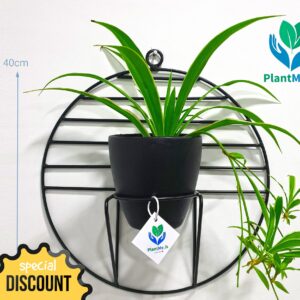
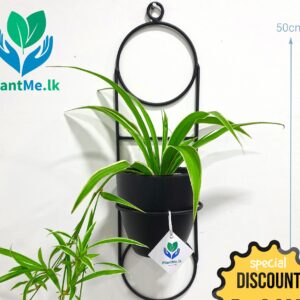 Wall Hanging Plant with Black Pot | PR-313
Wall Hanging Plant with Black Pot | PR-313 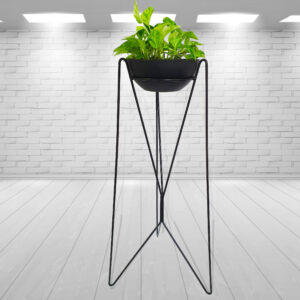 Premium Tall Indoor Plant with Black Pot - #502
Premium Tall Indoor Plant with Black Pot - #502 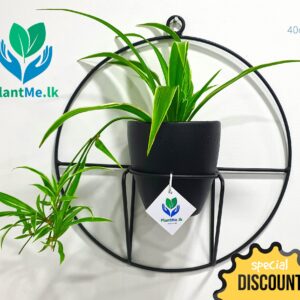 Wall Hanging Plant with Black Pot | PR-311
Wall Hanging Plant with Black Pot | PR-311 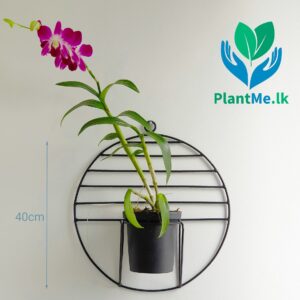 Wall Hanging Orchid Plant | PR-322C
Wall Hanging Orchid Plant | PR-322C 